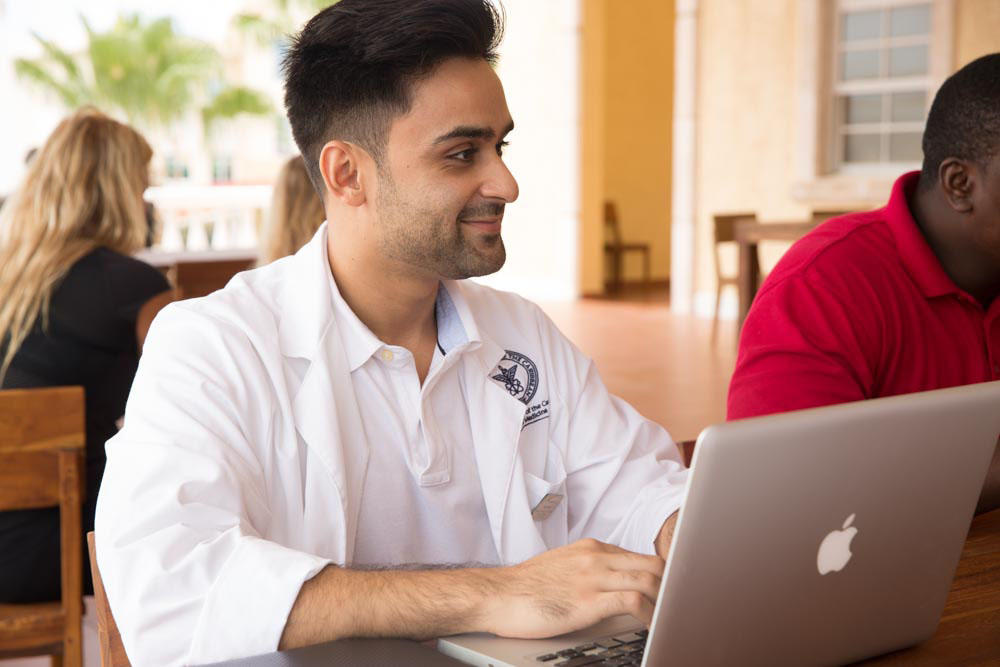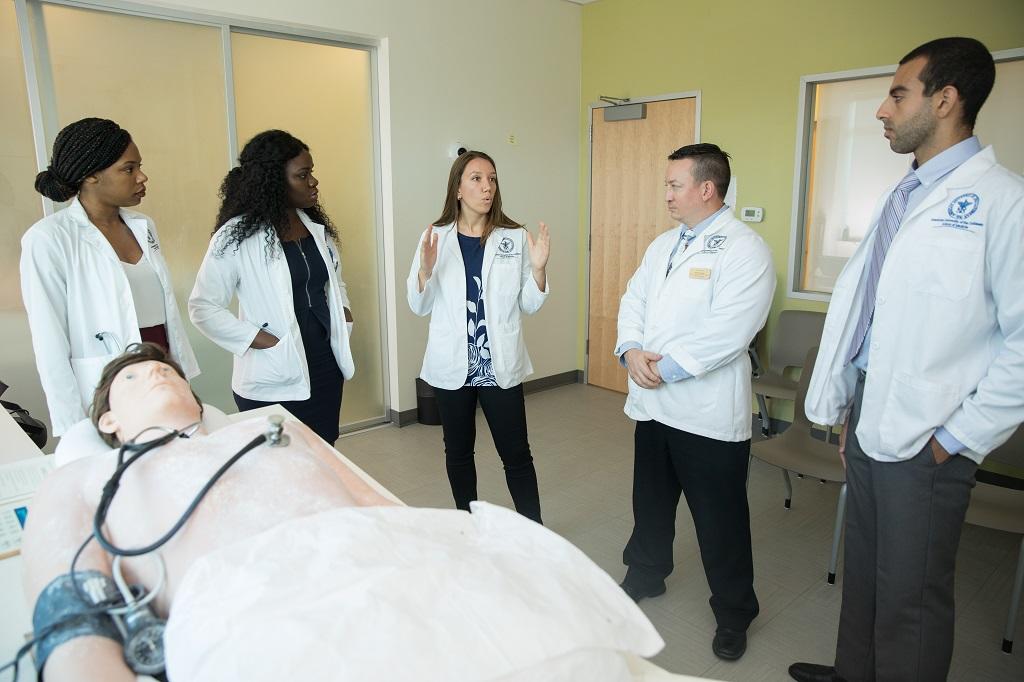Between your undergraduate coursework and your clinical experience, you are well on your way to medical school. Now it’s time to tackle the Medical College Admissions Test® (MCAT®). The MCAT is a rigorous standardized test that will help admissions personnel assess your readiness to attend medical school. It is administered by the Association of American Medical Colleges (AAMC). For students wanting to attend a four-year medical school such as American University of the Caribbean School of Medicine (AUC), MCAT scores are a crucial component of the application. The exam questions are multiple-choice, and they will test your knowledge of biology, chemistry, psychology, and sociology as well as your critical thinking and reasoning skills.
You have chosen a test date and registered for the exam, but perhaps you’re a bit intimidated. As with any other exam, MCAT test day can be very stressful, and you probably have a lot of questions. What is the structure of the exam? How long will it take? What do I need to bring on MCAT test day? Can I have a snack? Knowing what to expect on MCAT test day may help you prepare—and do well—so read on for the answers to these questions and more.
MCAT Test Day
Because the MCAT is such an important part of the medical school application process, the exam is held under specific conditions to ensure its integrity. You may not bring food, beverages, or personal items—no cell phones—into the testing room. You will be asked to remove jewelry and watches and to empty your pockets before entering the room. The testing center will provide storage for your personal items. You may bring in eyeglasses, hand sanitizer, and a photo ID. The testing center will provide earplugs, a fine-point marker, and a noteboard booklet. Each examinee is assigned a computer workstation on which to take the exam.
Examinees in need of special accommodation should contact the AAMC in advance to apply for accommodated testing. For more on what is and is not allowed in the testing room, details on the available break periods, and other information about the conditions under which the test will be administered, see the AAMC’s list of testing conditions.
In all, the MCAT can last up to 7.5 hours. It can be an intimidating experience, but understanding how the test is structured and administered can help you prepare. The MCAT is divided into four parts of roughly 90 minutes each. Examinees may take two short 10-minute breaks and one 30-minute lunch break between sections if they please. During the breaks, you can access your stored personal belongings and have a snack.
MCAT Test Day Schedule
On the day of the MCAT, arrive at the testing center at least 30 minutes prior to the beginning of the exam. This will give you time to check in, store your belongings, and get situated. When you arrive, you will be asked to sign an agreement acknowledging that you will follow the test rules and meet the test’s health and safety requirements. Your photograph will be taken and your palm will be scanned.
Because of the ongoing COVID-19 pandemic, specific safety precautions have been enacted. All examinees are required to wear a face mask. The number of examinees in each testing session has been limited, and examinees are seated six feet apart in accordance with social distancing measures. More detailed information about health and safety precautions in response to COVID-19 is available from the AAMC.
MCAT test day begins with an optional 10-minute tutorial before proceeding to the first section of the exam. This is followed by an optional 10-minute break, then the second section of the exam. An optional 30-minute lunch period follows before the third section of the exam. A final optional 10-minute break is available before the fourth and final section.
The MCAT is divided into four sections of roughly 90 minutes each. The topics of the four sections are: Chemical and Physical Foundations of Biological Systems (59 questions, 95 minutes); Biological and Biochemical Foundations of Living Systems (59 questions, 95 minutes); Psychological, Social, and Biological Foundations of Behavior (59 questions, 95 minutes); and Critical Analysis and Reasoning Skills (53 questions, 90 minutes).
The first three sections test your knowledge of foundational concepts in the sciences. You will need to demonstrate scientific reasoning and problem-solving skills. For the Critical Analysis section, you read passages from a range of disciplines in the humanities and social sciences, and then answer questions about those passages to test your analysis and reasoning abilities. For more detailed information about the sections, see the AAMC’s information about what's on the MCAT exam and how it is scored.
You should now have a good idea of what to expect on MCAT test day. But if you have further questions, the AAMC has prepared a booklet of MCAT essentials that provides many more details. After acing the MCAT, you are well on your way to medical school. Take the next step toward becoming a physician: apply for admission to AUC.
Related resources:




